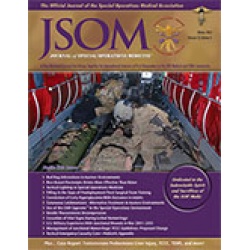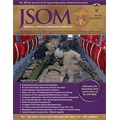Management of Junctional Hemorrhage in Tactical Combat Casualty Care: TCCC Guidelines-Proposed Change 13-03
Kotwal RS, Butler FK, Gross K, Kheirabadi BS, Baer DG, Dubick MA, Rasmussen TE, Weber MA, Bailey JA 13(4). 85 - 93 (Journal Article)
The vast majority of combat casualties who die from their injuries do so prior to reaching a medical treatment facility. Although most of these deaths result from nonsurvivable injuries, efforts to mitigate combat deaths can still be directed toward primary prevention through modification of techniques, tactics, and procedures and secondary prevention through improvement and use of personal protective equipment. For deaths that result from potentially survivable injuries, mitigation efforts should be directed toward primary and secondary prevention as well as tertiary prevention through medical care with an emphasis toward prehospital care as dictated by the fact that the preponderance of casualties die in the prehospital environment. Since the majority of casualties with potentially survivable injuries died from hemorrhage, priority must be placed on interventions, procedures, and training that mitigate death from truncal, junctional, and extremity exsanguination. In response to this need, multiple novel and effective junctional tourniquets have recently been developed.


 Español
Español 




